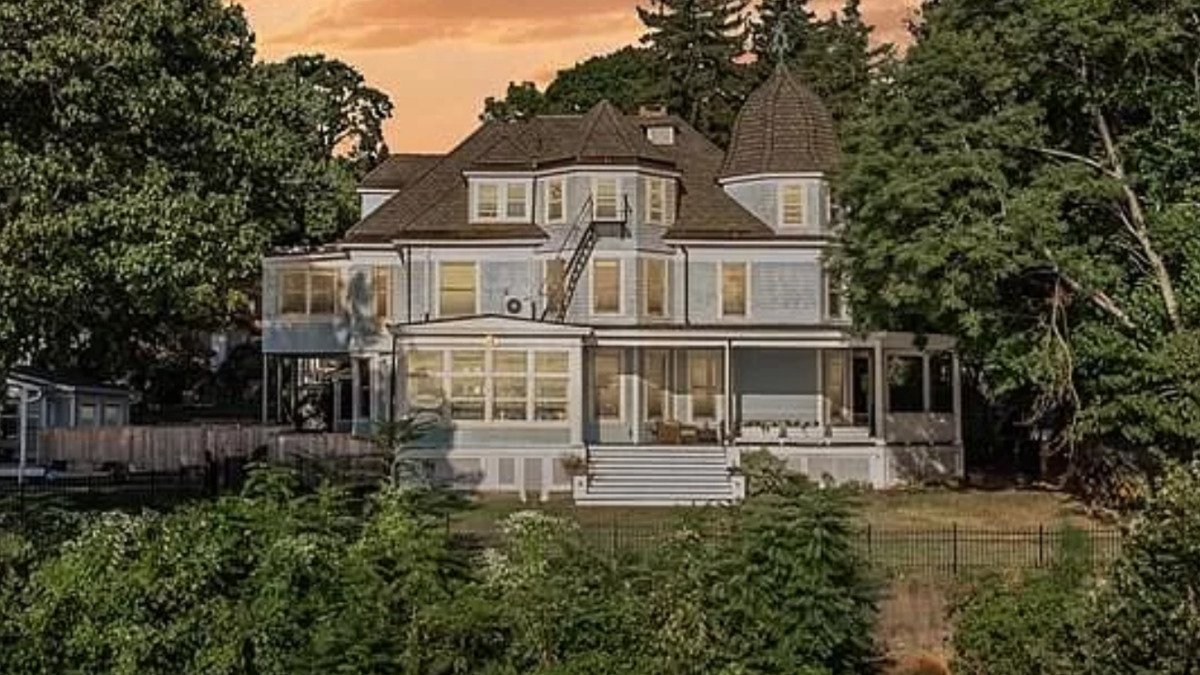The New York House Declared “Legally Haunted” Is for Sale

Have you got $1.9 million on hand for a new home? Are you okay with a five-bedroom Victorian that comes with some, shall we say, history? What if I were to tell you it was a bit haunted? It turns out, I’m legally obligated to do that—and the infamous house that made that obligation clear is for sale.
Now, it’s tough to live in a haunted house (even if a ghost might be good company), and it’s even harder to sell one. Many buyers understandably don’t want to move in with a spirit, or if they’re skeptics, they just might not like living in a place that’s well-known in local lore to be haunted and could attract other gawkers. So maybe, if you’re selling the house, you just won’t tell the buyers! That’s what Helen Ackley thought when she sold her Nyack, New York home in 1989, and her failure to disclose her home’s history led to the infamous “Ghostbusters ruling.”
When Jeffrey Stambovsky bought the home from Ackley, she declined to tell him about the full history of the Victorian charmer that dated back to the 1890s. The home, located at 1 LaVeta Place, was somewhat infamously haunted, something the Ackleys didn’t know when they bought it in the 1960s, but they coped. They claimed, among other things, to see the ghost there and that their bed shook quite often. But since no one told them back in the day, they kept quiet when they sold to Stambovsky. He wasn’t a local—he wouldn’t know.
But he found out and, while the house was in escrow, decided he didn’t want to live in a haunted house, backed out of buying, and demanded his down payment back. Ackley refused to let him out of the contract or refund the money, and a lawsuit ensued. The case went all the way to the Supreme Court of New York on the question of whether the buyer could get out of a contract on the basis that the seller didn’t disclose that the house was haunted, and the court said … yes.
In a truly delightful ruling, the New York Supreme Court stated: “in his pursuit of a legal remedy for fraudulent misrepresentation against the seller, plaintiff hasn’t a ghost of a chance, I am nevertheless moved by the spirit of equity to allow the buyer to seek rescission of the contract of sale and recovery of his down payment.”
The court ruled this way because the home had been included on walking tours of haunted houses and even featured in magazines a haunted location, which included interviews with Ackley. Because she held out the house as haunted in the press, Ackley was not allowed the deny the existence of the resident ghosts.
The court wrote: “as a matter of law, the house is haunted.” The real reason this case is taught in law schools across the country, though, is to get to the idea of what needs to be disclosed in contracts. Buyers need to beware, but sellers have a duty to disclose important things—like ghosts, apparently.
Since the 1991 decision, the house on Laveta has become even more famous, and now it’s back on the market, listed for a cool $1.9 million. The 5-bedroom, 5-bath, 4,629 square foot home is breathtaking, but for some reason, hasn’t sold yet. That’s a shame, considering one of its previous residents (of the mortal variety) was singer Ingrid Michaelson, who called it a “magical home.” It really does look lovely, and who wouldn’t want to live in such a place?
Ironically, the listing for the home doesn’t include the ghostly or legal history regarding the Stambovsky v. Ackley case, but I assume the seller will inform the buyers before they enter into a contract—otherwise, the new residents might be in for a big surprise. And when they consider “who ya gonna call?” the answer might be a lawyer.
(image: Zillow)
Want more stories like this? Become a subscriber and support the site!
—The Mary Sue has a strict comment policy that forbids, but is not limited to, personal insults toward anyone, hate speech, and trolling.—
Have a tip we should know? tips@themarysue.com